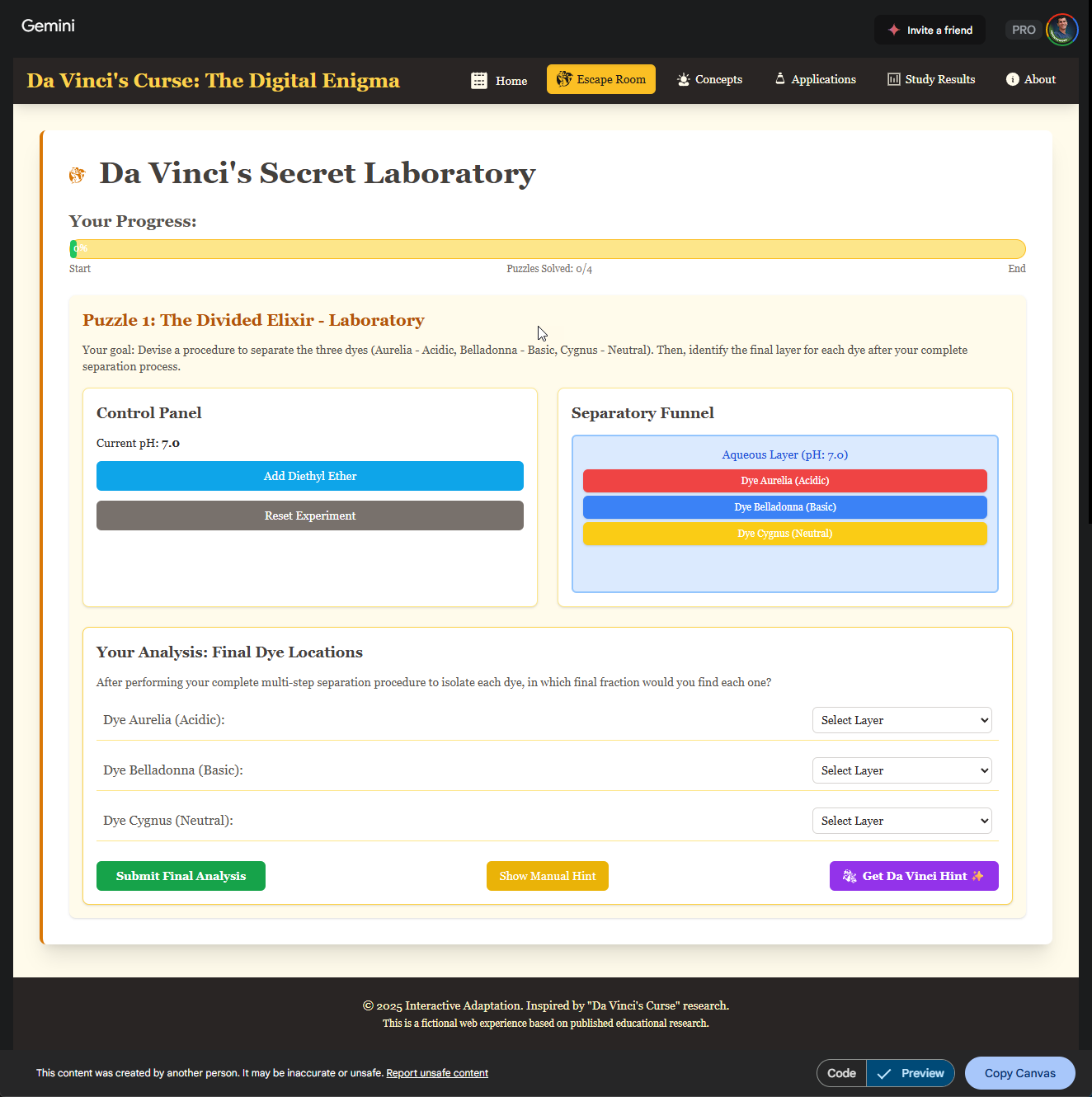BONUS APP!
I "vibe coded" this app using Gemini Pro! A great example of how to make research fun as well showcase how AI can help transform learning experiences. Want to learn more or how to create experiences for your class or team? Contact me by dm or visit joshuaberkowitz.us to schedule a free consultation!
Picture a classroom where learning chemistry feels more like embarking on an adventure than following a checklist. At the University of Nottingham, first-year undergraduates experienced just that with "da Vinci’s Curse," a chemistry escape room that turns traditional lab work into a collaborative, puzzle-driven quest.
Immersive Learning, Inspired by History
Set in a secret Florentine laboratory, the escape room immerses students in a story inspired by Leonardo da Vinci. Teams of five to seven work together to solve themed puzzles that revolve around essential laboratory techniques: liquid-liquid extraction, acid-base analysis, infrared (IR) spectroscopy, and thin-layer chromatography. This narrative approach makes learning active and memorable while encouraging critical thinking and teamwork.
- Tangible engagement: Students step into the roles of explorers, boosting anticipation and motivation.
- Collaborative problem-solving: Success hinges on teamwork, communication, and creative thinking.
- Direct skill application: Each puzzle is rooted in scientific concepts and laboratory skills covered during the academic year.
- Support through clues: Instead of direct instructions, students receive hints from "da Vinci" and staff gamemasters, fostering independence.
Measured Impact: Confidence and Skills Growth
Over two years, 157 students participated, and surveys measured their confidence before and after the escape room. The results were compelling: 17 out of 21 lab and transferable skills showed significant improvement, particularly in chromatography, spectroscopic analysis, and planning experiments.
- Notable confidence gains: Students felt more adept at key lab techniques after the activity.
- Development of soft skills: Teamwork, leadership, and problem-solving flourished—crucial abilities for scientists.
- Enjoyment and engagement: An impressive 94% enjoyed the experience, citing teamwork and the unique, low-pressure environment as highlights.
- Content-driven results: Skills not included in the escape room (like vacuum filtration) did not improve, indicating the importance of activity design.
Why Game-Based Labs Matter
Traditional labs can sometimes feel rigid, limiting creativity and engagement. "da Vinci’s Curse" shows how game-based learning can make science interactive, collaborative, and relevant. This format mimics real-world scientific challenges, where answers aren’t always clear and collaboration is vital. It encourages a growth mindset and better prepares students for future scientific careers.
- Hands-on participation: Students learn by actively doing, not just observing.
- Authentic challenges: Open-ended tasks reflect the complexity of actual research and industry work.
- Holistic skill development: The escape room encourages students to appreciate the value of both scientific and transferable skills.
- Memorable learning: The da Vinci narrative adds excitement and curiosity, making lessons stick.
A Model for the Future
"da Vinci’s Curse" illustrates the potential for educational escape rooms to significantly enhance both practical and soft skills in undergraduate science education. By fostering experimentation, teamwork, and problem-solving, this approach offers a dynamic supplement—or even an alternative—to standard labs. With strong student feedback and measurable improvement in confidence, game-based learning deserves a prominent place in STEM teaching strategies.


How a Chemistry Escape Room Transforms Lab Learning for Undergraduates
Can You Escape da Vinci’s Curse? A Chemistry Escape Room for Skills Consolidation